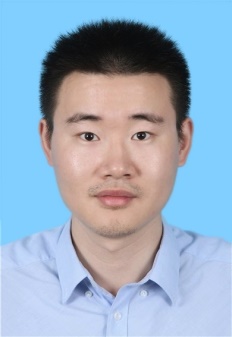Wang Xun

Name: Wang Xun
Position:-
Title: Associate Professor
Contact: kerriganwang@scau.edu.cn
Personal profile:
Wang Xun, Ph.D., Associate Professor. In 2014, he graduated from Sun Yat-Sen University and started his post-doctoral work at the Coastal Marine Laboratory of the Hong Kong University of Science and Technology. In June 2017, he joined the Marine College. He is mainly engaged in the research on the ecological toxicological direction of marine heavy metals. He presided over one National Youth Science Fund Youth Fund and participated in one of the key special projects of the national key R&D program. In recent years, he has published 9 SCI papers by the first author, including 3 papers published in Environmental Science & Technology, a journal of environmental science, 2 papers published in Plant and Soil, Journal of Agriculture and Forestry Science, and 3 papers in other JCR districts. (Environmental Pollution, Annals of Botany, etc.).
Education experience:
2009.09–2014.06, Sun Yat-Sen University, Ecology, PhD
2005.09–2009.06, Sun Yat-Sen University, Ecology, Bachelor
work experience:
2017.06-present, Associate Professor, South China Agricultural University, Ocean College
2014.09-2017.05, Hong Kong University of Science and Technology, Postdoctoral
Research projects:
1. National Natural Science Foundation of China: Using the kinetic model to study the effects of seawater fish intestine on the bioaccumulation process of mercury (21806040), 2019.01-2021.12, hosted.
2. National Key R&D Program “Blue Granary Science and Technology Innovation” Key Project: Habitat Degradation and Biodiversity Evolution Mechanism in Fishery Waters (2018YFD0900800), 2018.12-2022.12, Participation.
Published papers:
1.Wang X, Wang W-X*. Selenium induces the demethylation of mercury in marine fish. Environmental Pollution. 2017, 231: 1543-1551
2.Wang X, Wu FC, Wang W-X*. In vivo mercury demethylation in a marine fish (Acanthopagrus schlegeli). Environmental Science & Technology. 2017, 51: 6441-6451.
3.Wang X, Wang W-X*. Homeostatic regulation of copper in a marine fish simulated by a physiologically based pharmacokinetic model. Environmental Pollution. 2016, 218: 1245-1254.
4.Wang X, Wang W-X*. Physiologically based pharmacokinetic model for inorganic and methylmercury in a marine fish. Environmental Science & Technology. 2015, 49: 10173-10181.
5.Wang X, Tam NFY, He H, Ye Z*. The role of root anatomy, organic acids and iron plaque on mercury accumulation in rice. Plant and Soil. 2015, 394(1-2): 301-313.
6.Wang X, Li B, Tam NFY, Huang L, Qi XL, Wang HB, Ye ZH*, Meng M, Shi JB*. Radial oxygen loss has different effects on the accumulation of total mercury and methylmercury in rice. Plant and Soil. 2014, 385: 343-355.
7.Wang X, Tam NFY, Fu S, Ametkhan A, Ouyang Y, Ye ZH*. Selenium addition alters mercury uptake, bioavailability in the rhizosphere and root anatomy of rice (Oryza sativa). Annals of Botany. 2014, 114(2): 271-278.
8.Wang X, Ye ZH*, Li B, Huang LN, Meng M, Shi JB*, Jiang GB. Growing rice aerobically markedly decreases mercury accumulation by reducing both Hg bioavailability and the production of MeHg. Environmental Science & Technology. 2014, 48(3): 1878-1885.
9.Wang X, Yao HX, Wong MH, Ye ZH*. Dynamic changes in radial oxygen loss and iron plaque formation and their effects on Cd and As accumulation in rice (Oryza sativa L.). Environmental Geochemistry and Health. 2013, 35: 779-788.



